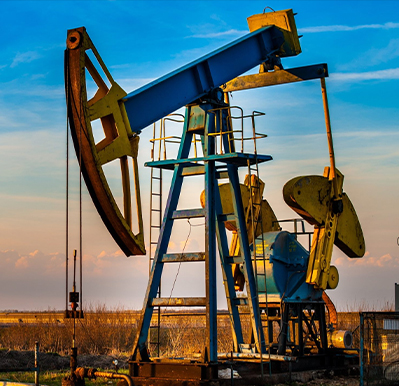- Afrikaans
- Albanian
- Amharic
- Arabic
- Armenian
- Azerbaijani
- Basque
- Belarusian
- Bengali
- Bosnian
- Bulgarian
- Catalan
- Cebuano
- Corsican
- Croatian
- Czech
- Danish
- Dutch
- English
- Esperanto
- Estonian
- Finnish
- French
- Frisian
- Galician
- Georgian
- German
- Greek
- Gujarati
- Haitian Creole
- hausa
- hawaiian
- Hebrew
- Hindi
- Miao
- Hungarian
- Icelandic
- igbo
- Indonesian
- irish
- Italian
- Japanese
- Javanese
- Kannada
- kazakh
- Khmer
- Rwandese
- Korean
- Kurdish
- Kyrgyz
- Lao
- Latin
- Latvian
- Lithuanian
- Luxembourgish
- Macedonian
- Malgashi
- Malay
- Malayalam
- Maltese
- Maori
- Marathi
- Mongolian
- Myanmar
- Nepali
- Norwegian
- Norwegian
- Occitan
- Pashto
- Persian
- Polish
- Portuguese
- Punjabi
- Romanian
- Russian
- Samoan
- Scottish Gaelic
- Serbian
- Sesotho
- Shona
- Sindhi
- Sinhala
- Slovak
- Slovenian
- Somali
- Spanish
- Sundanese
- Swahili
- Swedish
- Tagalog
- Tajik
- Tamil
- Tatar
- Telugu
- Thai
- Turkish
- Turkmen
- Ukrainian
- Urdu
- Uighur
- Uzbek
- Vietnamese
- Welsh
- Bantu
- Yiddish
- Yoruba
- Zulu
កក្កដា . 10, 2024 20:35
Back to list
Pressure rating for bull plugs an essential factor in oilfield operations.
Bull plugs are an essential component in oilfield operations, used to seal off a wellbore or casing during various downhole operations. One critical aspect to consider when using bull plugs is their pressure rating, which indicates the maximum pressure that the plug can safely withstand. Understanding the pressure rating of bull plugs is crucial for ensuring the safety and efficiency of oilfield operations.
The pressure rating of a bull plug is determined based on various factors, including the material of the plug, its design, and manufacturing standards. It is essential to use bull plugs with the appropriate pressure rating for the specific conditions and operations in which they will be used. Using bull plugs with an insufficient pressure rating can lead to catastrophic failures, such as blowouts or wellbore collapse, which can result in significant financial losses and environmental damage.
When selecting bull plugs for a particular application, it is essential to consider the pressure rating of the plug in relation to the maximum pressure that will be encountered during the operation. It is also crucial to ensure that the bull plug meets all relevant industry standards and certifications, such as API specifications, to guarantee its reliability and performance under high-pressure conditions

bull plug pressure rating. Regular inspection and maintenance of bull plugs are also essential to ensure that they maintain their pressure rating and integrity over time. Any signs of wear, damage, or corrosion should be promptly addressed to prevent potential failures during operations. Pressure testing of bull plugs should be conducted periodically to verify their pressure rating and detect any defects or weaknesses that could compromise their performance. In conclusion, the pressure rating of bull plugs is a critical factor to consider when using these essential components in oilfield operations. Proper selection, maintenance, and testing of bull plugs are essential to ensure their safety, reliability, and performance under high-pressure conditions. By understanding and adhering to pressure rating guidelines, oilfield operators can minimize the risks associated with downhole operations and protect personnel, equipment, and the environment from potential harm.

bull plug pressure rating. Regular inspection and maintenance of bull plugs are also essential to ensure that they maintain their pressure rating and integrity over time. Any signs of wear, damage, or corrosion should be promptly addressed to prevent potential failures during operations. Pressure testing of bull plugs should be conducted periodically to verify their pressure rating and detect any defects or weaknesses that could compromise their performance. In conclusion, the pressure rating of bull plugs is a critical factor to consider when using these essential components in oilfield operations. Proper selection, maintenance, and testing of bull plugs are essential to ensure their safety, reliability, and performance under high-pressure conditions. By understanding and adhering to pressure rating guidelines, oilfield operators can minimize the risks associated with downhole operations and protect personnel, equipment, and the environment from potential harm.
Latest news
-
Well Casing Extension Couplings – Applications and InstallationNewsJun.06,2025
-
Types of Crossover Subs in Drilling & CompletionNewsJun.06,2025
-
Key Features of High-Quality Tubing Pup JointsNewsJun.06,2025
-
Installation and Maintenance Tips for Steel Couplings for PipeNewsJun.06,2025
-
How to Select the Right Pup Joint for Oil & Gas OperationsNewsJun.06,2025
-
Applications of Stainless Steel Pipe CouplingsNewsJun.06,2025
Related Products







